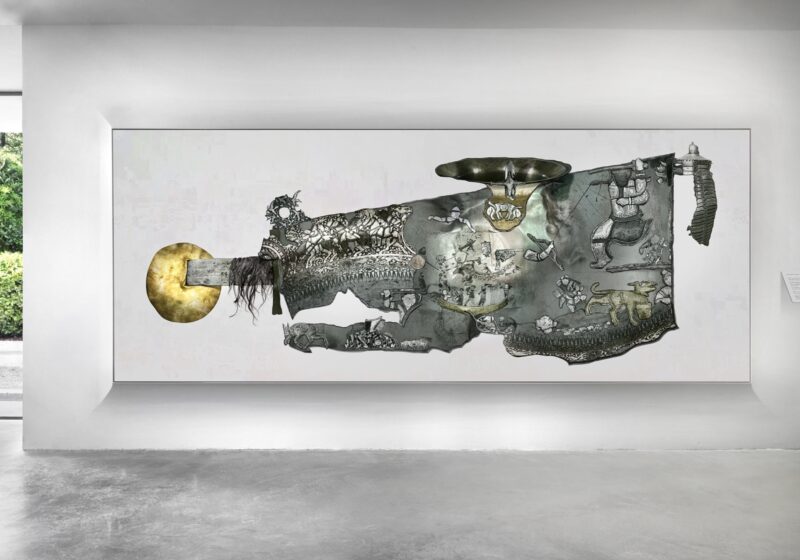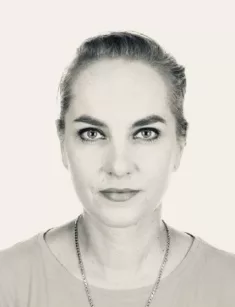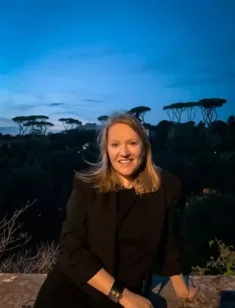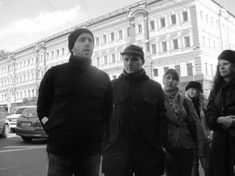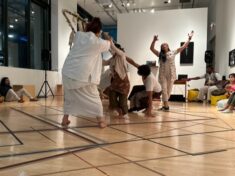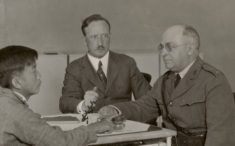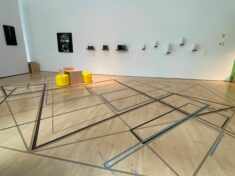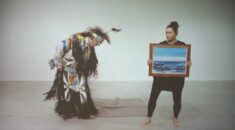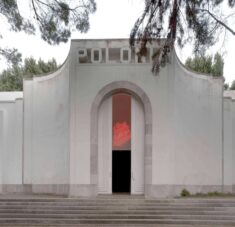About the event
We will gather in person in the James Gallery and also on Zoom.
Register HERE.
Zoom link will be HERE two hours before the event and will be emailed to you if you register.
To attend in person, proof of COVID vaccination or negative test is necessary.
This event is part of the discussion series Yiddishland Pavilion at The James Gallery: Transnationality, Memory and Museology. The discussions will investigate (trans)national representation at the Venice biennale, integration of contemporary art into Jewish museums, and artistic female voices that find alternative ways to be heard.
For the first time in its 127-year history the Venice biennale almost entirely focused on non-male artists - The Milk of Dreams curated by Cecilia Alemani included 213 artists from 58 countries with 90% of the participants being women or gender non-conforming artists. This curatorial gesture not only shifts the gender paradigm of the previous biennale editions but also makes us rethink the gender imbalance of the art world that is traditionally male- and heteronormative-dominant. Bringing together artists of different generations, Alemani uses a transhistorical approach and bridges the present and the past to address the processes and transformations that are shaping our fragile future, and in doing so she relies on «forms of symbiosis, solidarity, and sisterhood».
The first edition of Yiddishland Pavilion largely focuses on female and queer perspectives on Yiddish and Jewish narratives, experiences and perceptions that are often ignored or find themselves on the periphery of Jewish history due to their «uncomfortability» or «non-conformity». The discussion explores various artistic approaches to challenging narrative power structures and dominant visions of Jewish culture and history that are based on re-appropriation of knowledge, restitution of minority heritage, and de-marginalization of collective and individual memories and voices.
Artivist and researcher Zuzanna Hertzberg talks about her practice of recovering herstories of Jewish women fighters by bringing archives out into the streets, and into other accessible public spaces. Her performances include a spoken word component aiming to bring back and share these stories with the audience. Her art is the construction of a new archive accessible to all. It is a way of preserving testimony and recovering memory. It is also a story in which the artist connects the archival documents with the present of everyday activist practices, including the ones she participates in herself.
The talk includes a discussion of the work ”Individual and Collective Resistance of Women During the Shoah" Zuzanna did as part of the 12 Berlin Biennale. The talk will also concerns her new project she did as part of the 12 Berlin Biennale: an anti-hegemonic, anti-imperialist performative walk “Jewish Anarchist Women against Hegemony” followed by sharing stories about Jewish-Ukrainian women anarchists from the first half of the 20th century. The form and content of the banners link the past and present fight for the rights of women, minorities, refugees, and freedom in Ukraine. This is part of the cycle entitled „ZA-CZYN! (IGNITE!).”
Artist Ilit Azoulay speaks about her project that represents Israel at the 59th Venice Biennale. "Queendom" is a research-based project that explores alternatives to male-dominated, linear, and Eurocentric forms of knowledge transfer. Through panoramic photomontages, a sound work, and architectural interventions, the Queendom materializes. Azoulay opens pathways into an interconnected Middle East, where identities are fluid and complexities appreciated. She crops macro-photographic images from the archive of David Storm Rice (1913–1962), a scholar of Islamic medieval metal vessels, then digitally manipulates and rearranges them on scanned metal plates. In addition, she turns the building’s focus from West to East, transforming it into a space of shared histories and exposed cultural appropriations.
Artist Zsuzsi Flohr presents her new video work created for Yiddishland Pavilion. The imagined homeland for Roma people—from the 1930s—frames the video and provides a springboard for rhizomatic reflections on the roots and routes of Roma in Hungary, with a focus on poetry, painting, and songs. The video work, "On the ground, the Possibilities", is a continuation of an earlier project "How I Realized/How I Found Out", which was first exhibited in Budapest in the summer of 2021. "How I Realized/How I Found Out" deals with the commonalities and differences in concealing, rejecting, or embracing Jewish and Roma identity by members of the Third Generation after the Shoah/Pharrajimos. While researching my project for creating the video On the ground, the possibilities, I discovered that in the 1930s some Roma intellectuals drew inspiration from contemporary Zionist dreams of a Jewish state and envisioned a future, independent Roma homeland of their own. This video, "On the Ground, the Possibilities", uses her own artworks and research diary, along with television interviews and film
clips that Zsuzsi recorded from the computer screen with a digital camera, and then incorporated into a video collage as visual quotations.
YIDDISHLAND PAVILION is a hybrid online-offline project aimed at tracing and developing Yiddish and Jewish discourse in contemporary artistic practice. Being a fluid and nomadic project that is dispersed between the grounds of the 59th Venice Biennale and the virtual world, Yiddishland Pavilion represents Yiddishland — an imaginary country/land/space/territory and a stateless network connected through the Yiddish language and culture. At the 59th Venice Biennale, Yiddishland Pavilion takes place in a dialogue and collaboration with national pavilions of countries with histories of Yiddish-speaking Jewish migration. Сurated by Maria Veits and Yevgeniy Fiks, Yiddishland Pavilion analyzes the erosion of global political constellations, practises collective remembrance, condemns war and occupation, and documents consequences of migration and politics of exclusion that target “Otherness”.
More information on the Yiddishland Pavilion project can be found here.
Yiddishland Pavilion at the James Gallery is organized by Yevgeniy Fiks and Maria Veits in collaboration with the James Gallery.
